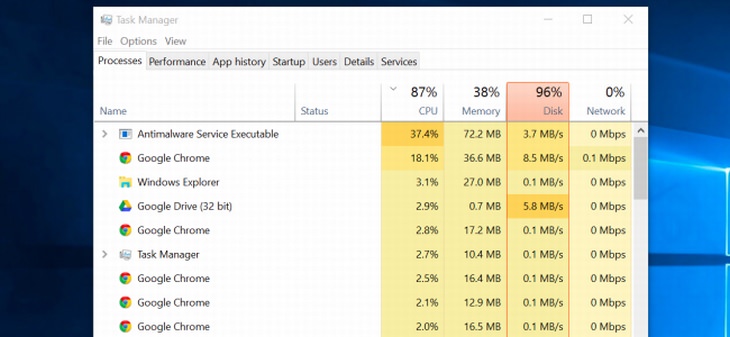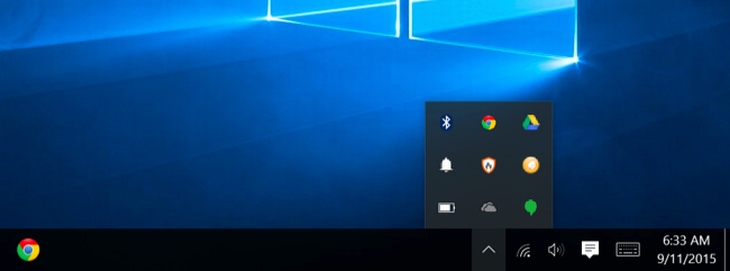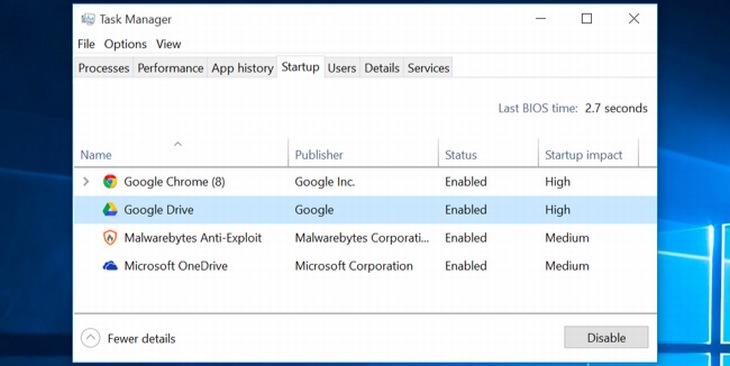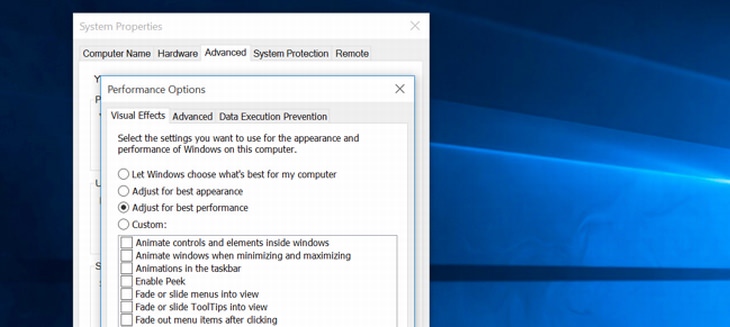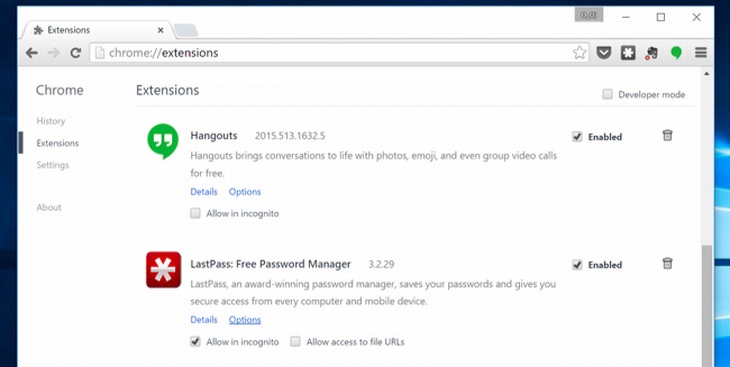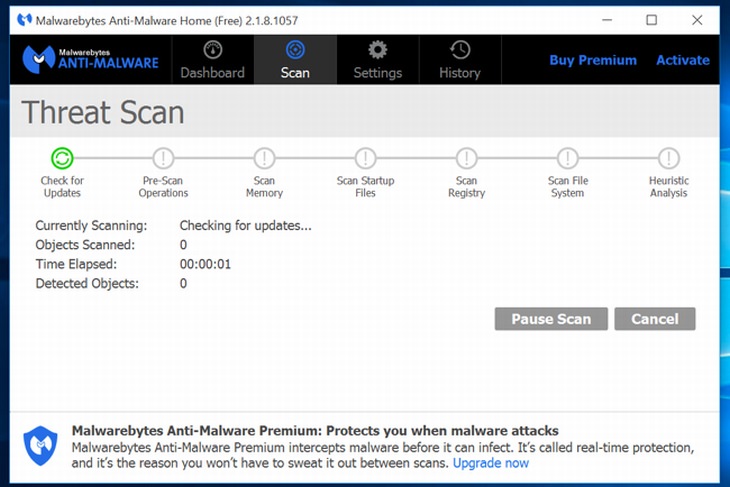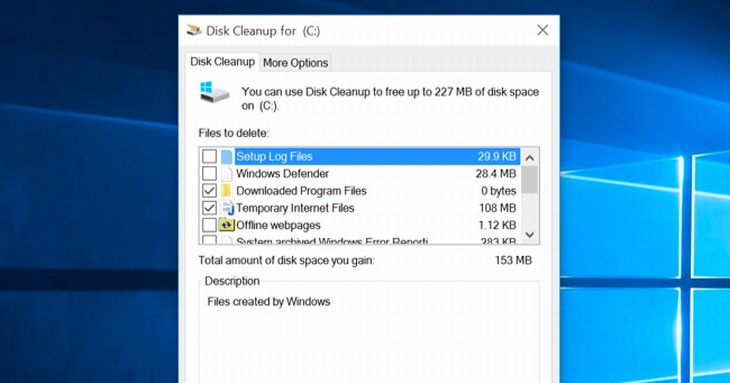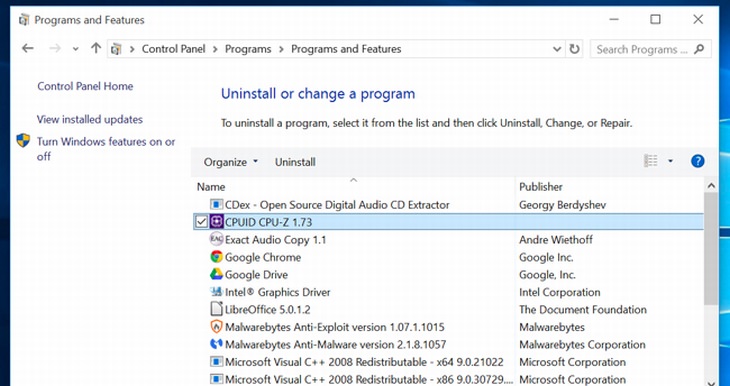1. Find Resource-Hungry Programs
Should your PC slow down suddenly, it’s highly likely that there’s a runaway system process hogging all your computer’s processing resources. You can find out whether such a process is the source of the problem by pointing to the Task Manager. Right-click on the start menu bar (or taskbar) with your mouse, then select Start Task Manager. Left-click on the Processes tab, then sort the list of processes by left-clicking on the CPU, Memory and Disk headers. If a process is taking up too much memory, you can try closing it as you would normally. If that’s not an option, simply right-click on the process that you want to close and select End Task.
2. Close System Tray Programs
A lot of applications or programs that you’re likely to use on your Windows PC are likely to run with an icon present in the system tray (located on the right-hand-side of the taskbar). Disable any applications that you don’t need running in the background by clicking on the arrow icon adjacent to the system tray, then right-click and close. This will free up vital processing resources.
3. Disable Startup Programs
On Windows 8, 8.1 and 10, there’s a built-in startup manager that you can avail yourself of to manage your computer’s startup programs. Right-click on the taskbar, then select Task Manager. Left-click on the Startup tab and disable any startup applications that you don’t need. A helpful little addition in these versions of Windows is the “Startup impact” column in the startup manager. This will tell you how high the impact of each startup task is on your PC’s processor allowing you to make an informed decision on what to disable.
4. Reduce Animations
The later versions of the Windows operating system all include snazzy animations, which despite looking good, can actually slow down your PC. To disable these animations and speed up your PC, all you need to do is press the Windows key on your keyboard, or right-click on the start button and select “System”. Then, left-click on Advanced System Settings. On the next screen, left-click the settings button that’s located underneath Performance. Under Visual Effects, left-click on “Adjust for best performance” to disable all of the animations.
5. Lighten Your Web Browser
If you use a web browser such as Google Chrome, the likelihood is that you would have been prompted to install several browser extensions when using the internet. Although these extensions might make surfing the web a little easier for you, they actually slow down your web browser and cause it to use more memory. To disable extensions, go to your web browser’s Extensions or Add-ons manager and simply disable or delete the ones that you don’t need.
6. Scan for Malware and Adware
Malware and adware sneak onto your Windows PC when you’re installing other programs or using the web. To ensure that these sneaky programs aren’t present on your computer, run a system scan with your antivirus program, then download and install Malwarebytes. When the program is installed, run Threat Scan to catch and remove potentially unwanted programs that your antivirus is likely to ignore
7. Free Up Disk Space
Windows PCs have a built-in Disk Cleanup tool that you can use to free up disk space. This is especially useful when your computer is running very low on memory and operating slowly. All you need to do to access this tool is point to the Start Menu and type Disk Cleanup in the search bar. When the popup window loads up, you’ll see a list of different file types with checkboxes alongside them. Check all of the boxes then click OK to begin the clean-up.
8. Uninstall Programs You Don’t Use
Over a period of time, there will be programs that you installed on your PC that won’t be of any use to you anymore. You can speed it up by uninstalling them via the Control Panel. Point to the Start Menu, then left-click on Control Panel. Left-click on Programs and Features, then select the program you want to uninstall. Uninstalling unused programs will free your PC of background processes, autostart entries, system services, context menu entries or other things that can slow down your PC.

